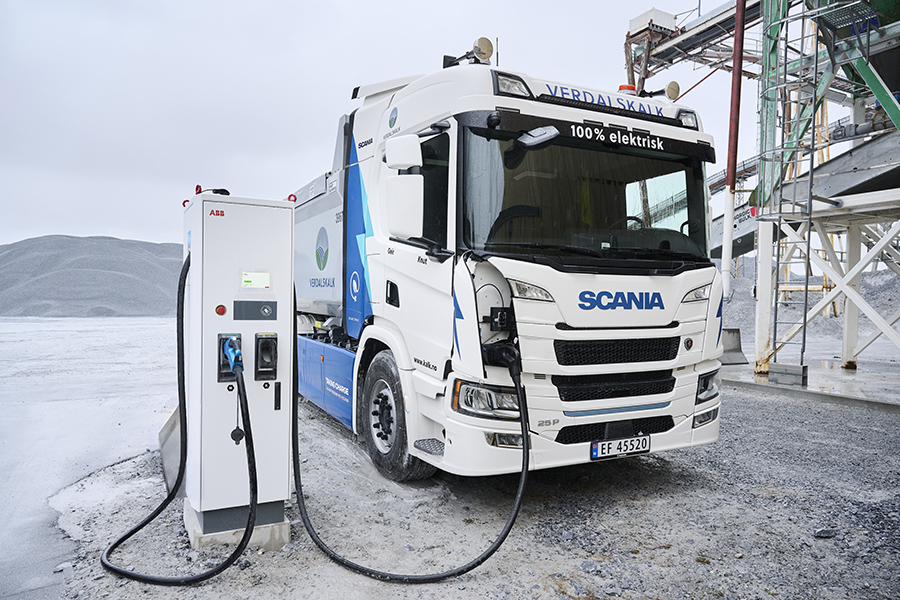25 January 2024
The implementation of a new customer relationship management platform can improve relationships with clients and boost sales, but like any digital transformation, it comes with risks. After a previous roll out failed at Scania, staff were sceptical of launching a renewed attempt – but the manufacturer succeeded at its second attempt, with counsel from Anderson MacGyver.
Founded in 1891, Scania was one of the first manufacturers to introduce modern products to the automotive market such as the turbocharger, and the ethanol-powered bus. The firm today employs about 57,000 people spread across seven regions, operating with 50+ largely autonomous business units, serving more than a hundred countries.
The company has a diverse product range – including a market-leading all-electric truck launched in 2020, and the offering of modular, component-based production that enables greater customisation.

Photo: Scania.com
This scale and flexibility is obviously beneficial when it comes to servicing global clients, but it also makes it tricky to execute complex change in response to market disruption – as Jon Månson knows only too well. Having been Head of Sales Digitalisation at Scania since 2021, his initial task was the deployment of a central customer relationship management programme powered by Microsoft technology, known as Scania CRM (SCRM).
At the time, the project was stranded, barely a quarter of the way through.
Fast forward over a year, and Scania’s executive team re-launched the program. “With a standardised system, we could offer products the same way everywhere,” Månson recalls. At the same time, it could help make the right data available to move into new forms of digital services.
But a successful re-boot of any digital technology is easier said than done – and Månson realised he would need expert support if Scania were to realise SCRM’s full potential.
New vision
Contact was made with Anderson MacGyver for the roll out. A team led by Cliff de Laat, who held the role of Product Owner of the system to be rolled out within Scania, soon determined where the problems in the project’s initial execution were. Meanwhile, the team also spent time detailing what needed to be put into place this time round.
“The local stakeholders did not yet have a clear picture of the added value of the new system,” says De Laat. “SCRM was mainly seen as a way to save costs, which on paper was not even an objective. Partly because of this, the internal fan base was lacking.”
The team also uncovered the need for a clear product vision and ensuring that everyone involved within Scania is committed to the intended design.
To ensure the system would gain buy-in and a soft landing in different markets, the project team introduced what De Laat describes as “agile product ownership in combination with structured demand management.” This approach was based on three pillars: “aggregation of needs within the different markets, prioritisation on the added value of requested functionality, and a standardised rollout in all markets.”
Leveraging the agile methodology, the team saw the opportunity to use the freedom of the local businesses of Scania for the roll out. This was used for a ‘configuration federated approach’ for the most mature markets of the firm, which have their own development teams. It enabled certain features in the SCRM to easily be switched on or off, taking into account local wishes and tastes.
“This allowed them to create their own system locally based on central options and best practices provided”, De Laat notes.
This was something which was important for winning back the trust of staff who had become jaded during earlier attempts at deployment. Local stakeholders had called for replacing the already partially rolled-out Microsoft system with that of competitor Salesforce – but adding a local flavour to SCRM helped make the case not to do so.
“After analysis it was clear that little or nothing would have been gained from a different solution in a functional sense,” says De Laat. “And since a quarter were already working with the Microsoft-based SCRM, an alternative solution would have taken us even longer. By actively selling the added value of the chosen solution, we achieved the necessary support.”
One of the tangible values was the enhanced reporting possibilities, both within countries as well as between countries and headquarters. Most importantly, the re-booted SCRM enables sales and account managers to better manage and monitor their commercial work, across the entire lifecycle.
Big impression
Looking back on the engagement, Månson says, “There are of course still challenges, but the speed at which we are now making progress is making a big impression within our organisation. It shows that you can achieve these types of changes without top-down management in close collaboration with the various markets. And that you can overcome the usual friction between centralised, decentralised, and mutual departments.”
To realise this, he argues that three things were fundamental. These were making stakeholders responsible for their decisions; consistency in the chosen direction; and involving the right people.
“On the last point, we benefited greatly from the help from Anderson MacGyver. Their team helped us achieve real breakthroughs,” Månson asserts.
The management style based on harmony and support also contributed to the success. Månson continues to ask himself what he can do for the federated stakeholders, rather than taking a top-down view that previously caused the programme to stutter.
Pointing to the difference this new approach makes, De Laat concludes, “We took everyone with an opinion seriously. In internal politics, the matter was reduced to its essence. Naturally, we were prepared to discuss and confront this. And the courage and support shown by Jon in adopting this way of working helped enormously, too.”
